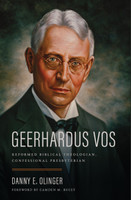Great for Reformed brethren
"Planting, Watering, Growing" is a consortium of writers from a Presbyterian/Reformed background discussing pertinent topics related to planting a church. Part one discusses the "why" of planting a confessionally reformed church. Part two goes into methods. Part three digs into the work of planting dealing with the heart of a church planter, strengthening the worship service, and making membership important. Part four gets into the topic of making the church relevant to culture without losing its roots. It begins in the theological and biblical context, moves towards methodology, and finishes with the details and specifics.
I am a Southern Baptist by choice, we own the market on church planting. To a Southern Baptist, there is nothing more important than this! I am not a church planter, but I am Pastor of a small church re-start. So although I have not read alot of church planting material, you don't have to go to far in Southern Baptist life to be thoroughly exposed to it. It is in everything we SB's publish.
As I read Hyde and Lems (editors) book I did not read anything new. I read a complete discourse on how to start a church as an Orthodox Presbyterian minister of the United Reformed Churches in North America (URCNA) or the Presbyterian Church in America (PCA), or as a member of the North American Presbyterian and Refomed Council (NAPARC). This should not discount your reading this fine book. They cover every known topic that a church planter would need to know, but it must be remembered that it does so from a Presbyterian/Reformed viewpoint.
This is not a knock against my Reformed and Presbyterian brothers. I learned alot from this book. I have come to have an even greater depth of appreciation of corporate worship. SB's could learn alot from Micheal Horton, one of the contributors and a fine theologian! His chapter, "No Church, No Problem," was worth it alone! The chapter on public worship made me embarrassed as a SB. SB's have put such weight on pragmatism, that our denomination would do well to read this chapter and its implications for us today. Two chapters towards the end of the book on culture and contextualization again sounded the alarm in my ear to the danger of contextualization becoming the dominant force in church life.
Although this book presented no new details for me to institute in my own church, it did a very reasonable job of pointing me back to the Book and the roots of the Christian faith. For this I give a hearty thanks to Daniel R. Hyde and Shane Lems for producing it.
I received this book free from the publisher through a book review/bloggers agreement. I was not required to write a positive review. The opinions I have expressed are my own. I am disclosing this in accordance with the Federal Trade Commission’s 16 CFR, Part 255 <http://www.access.gpo.gov/nara/cfr/waisidx_03/16cfr255_03.html>
: “Guides Concerning the Use of Endorsements and Testimonials in Advertising.







